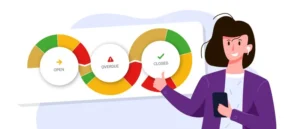What are the potential challenges and limitations of these emerging survey trends?

The world of online surveys is rapidly evolving with the introduction of emerging trends and technologies. While these innovations promise to improve data collection and respondent experiences, they also bring along a set of potential challenges and limitations that researchers, survey creators, and participants need to be aware of. In this article, we will explore the potential issues associated with these emerging survey trends.
Contents
1. Survey Fatigue and Overexposure:
One significant challenge is survey fatigue. In today’s digital world, individuals are bombarded with surveys, questionnaires, and feedback requests. The overexposure to surveys can lead to respondent burnout and a decrease in response rates. As more organizations adopt survey technologies, finding ways to engage respondents effectively becomes challenging.
2. Privacy Concerns:
The digital nature of emerging survey trends raises concerns about data privacy. Respondents may worry about the confidentiality of their responses and the security of their personal information. Ensuring that data is stored and transmitted securely is a significant consideration.
3. Selection Bias:
Emerging survey trends often rely on digital platforms and the internet, which can introduce selection bias. Not everyone has equal access to the internet or technology, potentially excluding certain demographics from surveys. This bias can skew the results and hinder the survey’s representativeness.
4. Response Quality:
While automation can streamline the survey process, it can also impact the quality of responses. Respondents might provide hurried or insincere answers, especially when faced with extensive surveys. Ensuring the quality of responses and preventing “click-through” responses is a challenge.
5. Question Design and Interpretation:
Innovations often enable the use of multimedia elements, interactive features, and complex question designs. This can lead to respondent confusion and challenges in interpreting responses accurately. Survey creators must strive for clarity in question design.
6. Limited Reach:
Surveys delivered through specific channels, such as mobile apps or social media, might have a limited reach. They may not capture the opinions of individuals who do not use those platforms. Achieving a broader demographic reach remains a challenge.
7. Ethical Concerns:
The use of emerging technologies like AI and chatbots in surveys raises ethical concerns. Are respondents fully aware when they are interacting with automated systems rather than human surveyors? Maintaining transparency and ethical survey conduct is critical.
8. Technical Issues:
While technology enhances survey experiences, it also introduces technical issues. Respondents may encounter problems with compatibility, slow loading times, or even survey crashes. These technical challenges can lead to survey abandonment and data loss.
9. Analyzing Big Data:
The influx of data generated by emerging survey trends often leads to big data challenges. Analyzing and interpreting vast datasets can be overwhelming without appropriate tools and expertise. Researchers must adapt to efficiently process and gain insights from large volumes of data.
10. Balancing Quantity and Quality:
With the ability to collect more data than ever, the challenge is to strike a balance between quantity and quality. While more data can be beneficial, it should not come at the expense of the depth and richness of responses.
11. Security and Fraud:
Online surveys are susceptible to fraudulent responses. Ensuring the authenticity of respondents and protecting against fraudulent entries is a challenge that survey creators need to address.
12. Constant Adaptation:
The rapidly evolving nature of technology means that survey creators must continuously adapt to new trends, tools, and platforms. Staying updated and making informed decisions about which trends to adopt is an ongoing challenge.
In conclusion, while emerging survey trends offer exciting possibilities for data collection, they also present potential challenges and limitations. Researchers and organizations must carefully consider these issues to create effective, ethical, and engaging surveys that yield valuable insights while respecting respondents’ time and privacy. Addressing these challenges will be essential for the future of online surveys.









